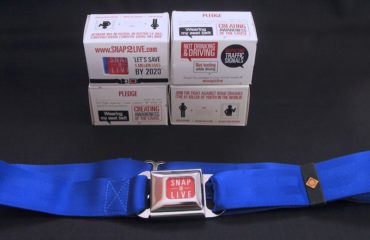Yesterday, Sunday, November 17, 2013, was the World Day of Remembrance for Road Traffic Victims. It was a day to stop, grieve and remember the tremendous global loss of life due to traffic crashes. According to the World Health Organization (WHO):
- Road traffic crashes take the lives of nearly 1.3 million people every year, with almost half being pedestrians, cyclists and motorcyclists.
- Between 20-50 million people are injured in crashes.
- Road traffic injuries have become the leading cause of death for people 15–29 years old.[1]
If nothing changes, it is predicted that by 2020 it will increase to almost 2 million people dying annually from traffic crashes. [2] It is with that backdrop that the U.N. declared this to be the Decade of Action for Road Safety—2011-2020. With a goal of saving 5 million lives, the Decade of Action is a clarion call for all countries and global citizens to be proactive and do more.
Change is Possible
 World Day of Remembrance is not just a day to remember the past; it is a day to look to the future. It is a time to review the changes made, and determine the changes to come. It is a time to make a difference and save lives. The fantastic news is that changes have happened, lives have been saved. The bad news is that not enough has been done. It is well known that certain factors are high risk for road safety: speed, impaired driving, failing to wear motorcycle helmets, and not using seat belts and child safety restraints. By passing comprehensive laws on these topics AND enforcing them, lives can be saved. But the vast majority of countries do not have comprehensive laws addressing these issues.
World Day of Remembrance is not just a day to remember the past; it is a day to look to the future. It is a time to review the changes made, and determine the changes to come. It is a time to make a difference and save lives. The fantastic news is that changes have happened, lives have been saved. The bad news is that not enough has been done. It is well known that certain factors are high risk for road safety: speed, impaired driving, failing to wear motorcycle helmets, and not using seat belts and child safety restraints. By passing comprehensive laws on these topics AND enforcing them, lives can be saved. But the vast majority of countries do not have comprehensive laws addressing these issues.
Yet, more than passing laws on those five key factors is needed. There is no question that they are crucial, but they are crucial components of a more comprehensive approach. Any comprehensive approach must also look towards protecting pedestrians and bicyclists, creating a safer road infrastructure, improving vehicle safety standards and training health care responders to respond quickly and appropriately. And it will take time to educate the public and broaden their understanding and support of the importance of what is being done—that it is to save their lives as well as the lives of their family and friends.
Change is Happening
There are countries stepping up to make it safer for their citizens to drive. Countries working to save lives include:
- Cambodia implementing a mass media campaign and stepping up law enforcement activities against “drink-driving,” a major risk for death on Cambodia’s roads. (See video below)
- Vietnam encouraging motorcyclists to use correctly fastened, quality helmets to save lives, all in accordance with their country-wide requirement of wearing helmets. A requirement that law enforcement strictly upholds.
- India developing safer roads in four key states, using proven road safety plans that include low-cost road markings, pedestrian safety, and intersection upgrades.
- Mexico passing strong impaired driving laws by reducing the BAC level from .15 to .05, zero tolerance for professional drivers and increasing the sanctions.
- New Zealand passing a comprehensive anti-drink-driving law in 2011 and the additional tightening of it in 2013.
Time to Go To Work
Is this all it takes? Of course not. But it demonstrates an understanding that countries everywhere need to respond, for the benefit of their citizens and visitors, and for the lives that can be saved. It is a demonstration of how far we have come and how far we have to go. It is a demonstration that change is possible.
But is it only countries that need to act? Absolutely not. We can all make a difference and save lives. Our daily actions can be lifesaving. Remember:
- Don’t drink and drive.
- Don’t text and drive.
- Maintain the speed limit.
- Everyone in the car must wear a seat belt.
- Use properly secured child safety seats for your children.
- Wear a helmet while on a motorcycle.
As we go on and live our lives, our actions can help others live theirs. As we move forward we can talk to our family and friends and let them know about these lifesaving actions. It is not just countries that can make a difference. Each and every one of us can impact those around us.
On Sunday we remembered those who needlessly lost their lives on roads everywhere; tens of thousands of lives ended because of road traffic. Sunday was a day to remember. Monday and every day after is a day to act. A day to step up and say, Enough is Enough—wherever we are and whatever our status is in our countries. It is a time to remember that road traffic fatalities affect each and every one of us in some way; the loss of a friend or family member, an injury that could have been prevented or a collision avoided. It is a time to recommit and take action.
What actions are you going to take to save lives? Let me know below in the comments.







Even with all the research, tweets, and blogs I read, I didn’t know what yesterday was. My son was killed by a hit and run, speeding, underage drunk driver while riding his bike in a bike lane 2 years ago. The road was straight, flat, dry, and well-lit. Even so, many people blamed my son just because he was riding his bike at night (legally lit up, etc.).
I now speak at DUII, MIP, and High Risk Driver victim impact panels 4-8 times per month across three counties. In 2 weeks I’ll be speaking to soon-to-be-released prisoners. I’ve forgiven the man who killed Dustin and visit him in prison, hoping to support him to change inspire him to speak to youth when he gets out. I’ve testified before the state legislature twice re hit-and-run. An attorney helped me create a website which has been featured on several local newscasts. I attend court hearings and memorial services, introducing myself as another person who experienced what they now are and offer support and ask for their help in adding voices to our cause, when they are able.
I know people are like I was, ignorant of the scope of preventable tragedy on our roads. I’m not sure how to educate the masses. One vision I have is a day once a year where someone stands where a fatality happened holding a sign or silhouette of the man, woman, or child who died there. Roadside memorials don’t show the scope of the danger, but if a person could drive to or from work a few miles and see that maybe 10 people -or however many- died on just that one stretch of road, would that mean something more lasting? I’m just throwing ideas out.
Thank you for all that you do.
What you are doing is educating people – sometimes it is one person at a time, but it adds up, with your message at the impact panels and your website and at court. There is no easy answer at this point in time but for each us to continue sharing the message that we can all make a difference. Thank you for everything you are doing. Sometimes it is hard to know, but I am sure you are saving lives.